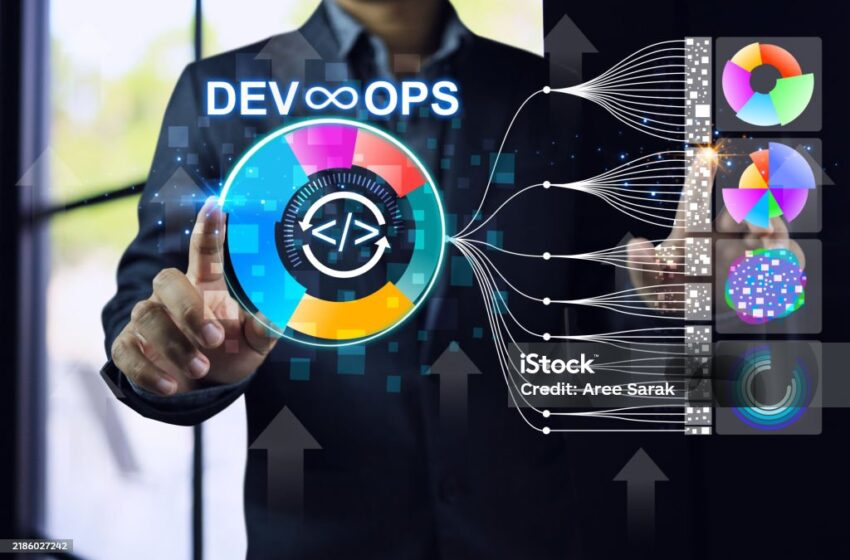In today’s rapidly evolving cyber landscape, no organization can afford to overlook application security. As digital threats grow in complexity and frequency, businesses are realizing that it’s no longer enough to focus solely on speed and agility. This shift has given rise to the transition from DevOps to DevSecOps — an approach that embeds security at the heart of the software development lifecycle.
While Agile and DevOps have transformed how teams deliver software at speed, 2022 and beyond demand something more — secure delivery without compromising velocity. Contrary to popular belief, DevSecOps is not a replacement for DevOps; rather, it’s a natural evolution that integrates security seamlessly into DevOps workflows.
Understanding DevOps vs. DevSecOps
DevOps was designed to streamline the software development process — from coding and testing to deployment — by bridging the gap between development and operations teams. Its goal: accelerate delivery while minimizing risk.
DevSecOps, on the other hand, extends these principles by embedding security as a shared responsibility across every stage of the development pipeline. It moves beyond the traditional perimeter-based security model, emphasizing continuous protection of infrastructure, applications, and data.
Key Differences Between DevOps and DevSecOps
1. Focus
DevOps primarily emphasizes collaboration and efficiency between IT and operations teams to enhance delivery speed and performance. However, this acceleration often comes at the expense of security.
DevSecOps introduces a shift in mindset — security is built in, not bolted on. Rather than treating security as a final checklist item, it integrates continuous security checks and controls throughout the development process.
2. Goal
The goal of DevOps is to break down silos between development and operations, promoting automation and collaboration to reduce delivery risks.
DevSecOps expands this goal by ensuring security decisions are data-driven, automated, and transparent, without slowing down the release cycle.
3. Skills and Competencies
DevOps professionals typically need strong Linux, scripting, and toolchain management skills.
In contrast, DevSecOps demands additional expertise — including vulnerability detection using automated tools, cloud security management, and proactive infrastructure protection. These added competencies ensure teams can detect, prevent, and respond to threats effectively.
Where DevSecOps and DevOps Align
According to GitLab’s 2021 Global DevSecOps Survey, 60% of developers are releasing code faster than ever, and 72% of security professionals rate their organizations’ security posture as strong. These results highlight how DevOps and DevSecOps share a common DNA of automation, agility, and continuous improvement.
Both models rely on the following principles:
- Continuous Integration (CI): Regularly merging code changes ensures up-to-date, synchronized builds.
- Continuous Delivery & Deployment (CD): Automates updates and deployments for higher efficiency.
- Microservices: Decomposes applications into smaller, manageable components for scalability.
- Infrastructure as Code (IaC): Uses code to manage infrastructure, reducing manual intervention and human error.
DevSecOps further enriches these practices with:
- Common Weakness Enumeration (CWE): Improves code quality and vulnerability detection in CI/CD pipelines.
- Threat Modeling: Identifies potential security risks early in development.
- Automated Security Testing: Continuously scans and mitigates vulnerabilities before production.
- Incident Management: Establishes standardized response protocols for security incidents.
Benefits of DevSecOps for Startups and Enterprises
1. Reduced Cost and Faster Delivery
Integrating security from the outset helps prevent costly vulnerabilities that typically surface later in production. By catching issues early, DevSecOps saves time, money, and development effort — while maintaining the delivery speed DevOps is known for.
With proactive security, code entering production is deployment-ready, eliminating delays caused by late-stage fixes. Far from slowing processes down, DevSecOps accelerates delivery while reducing overall risk.
2. Shared Security Responsibility
DevSecOps promotes a culture of shared ownership. Every team member — from developers to testers — is accountable for maintaining secure code.
This collective responsibility fosters collaboration between development, security, and operations teams, ensuring consistent security standards and reducing internal friction.
3. Automation-Driven Remediation
By embedding automated security testing into CI/CD pipelines, organizations can detect and remediate vulnerabilities in real-time. Automated tools integrate smoothly within development environments, allowing continuous protection without interrupting workflow.
This automation enhances visibility, shortens feedback loops, and helps teams maintain secure and stable releases.
Transitioning from DevOps to DevSecOps
The Upskilling IT 2022 Report revealed that nearly 85% of organizations consider DevOps or DevSecOps a critical operating model. Transitioning, however, requires careful planning and cultural alignment.
Here are key steps to make the shift seamless:
1. Choose the Right Security Testing Methods
Different projects require different testing approaches — static, dynamic, or interactive application security testing. Select methods that align with your specific product and risk profile.
2. Establish Coding Standards
Strong code is secure code. Define organization-wide coding standards and train developers to adopt best practices for writing, reviewing, and securing code.
3. Secure Applications from the Inside Out
Modern threats demand internalized security, not perimeter defenses. DevSecOps encourages encryption, secure API design, and automated vulnerability management using tools like VPNs, SSL, and risk identification frameworks.
This internal-first approach ensures applications remain secure across distributed and cloud-native architectures.
The Future is Secure, Automated, and Collaborative
The focus of modern software delivery has evolved from “fast deployment” to “secure and fast deployment.” DevSecOps represents this next step — where agility meets resilience.
By integrating security throughout the software lifecycle, organizations not only strengthen their defenses but also enhance reliability and customer trust.
To explore how DevSecOps can reshape your development process, speak with Rekordist Fintech’s DevSecOps experts. Our specialists can help you design a customized roadmap to transition seamlessly from DevOps to DevSecOps, ensuring both speed and security in your digital transformation journey.




